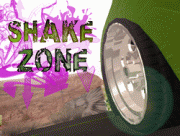
His arrest has come after nearly 13 years on the run - during which time Serbia has come under increasing international pressure to catch him.
Accused of leading the slaughter of thousands of Bosniaks and Croats, he has twice been indicted by the United Nations war crimes tribunal in The Hague.
The UN says his forces killed at least 7,500 Muslim men and boys from Srebrenica in July 1995 as part of a campaign to "terrorise and demoralise the Bosnian Muslim and Bosnian Croat population".
He was also charged over the shelling of Sarajevo, and the use of 284 UN peacekeepers as human shields in May and June 1995.
After the Dayton accord that ended the Bosnian war, the former nationalist president went into hiding - possibly in the mountainous south-eastern area of the Serb-controlled part of Bosnia, protected by paramilitaries.
International pressure to capture Mr Karadzic mounted in spring 2005, when several of his former generals surrendered, and a video of Bosnian Serb soldiers shooting captives from Srebrenica shocked television viewers in former Yugoslavia.
Belgrade announced several arrests in connection with the video, which was first shown during the war crimes trial of former Yugoslav President Slobodan Milosevic.
In early 2007, Nato troops in Bosnia-Hercegovina raided the homes of Mr Karadzic's children, saying they believed Sasa and Sonja Karadzic to be part of a network supporting their father.
Mr Karadzic has denied the charges against him and refused to recognise the legitimacy of the UN tribunal.
"If The Hague was a real juridical body I would be ready to go there to testify or do so on television, but it is a political body that has been created to blame the Serbs," he told the UK-based newspaper The Times in February 1996.





































